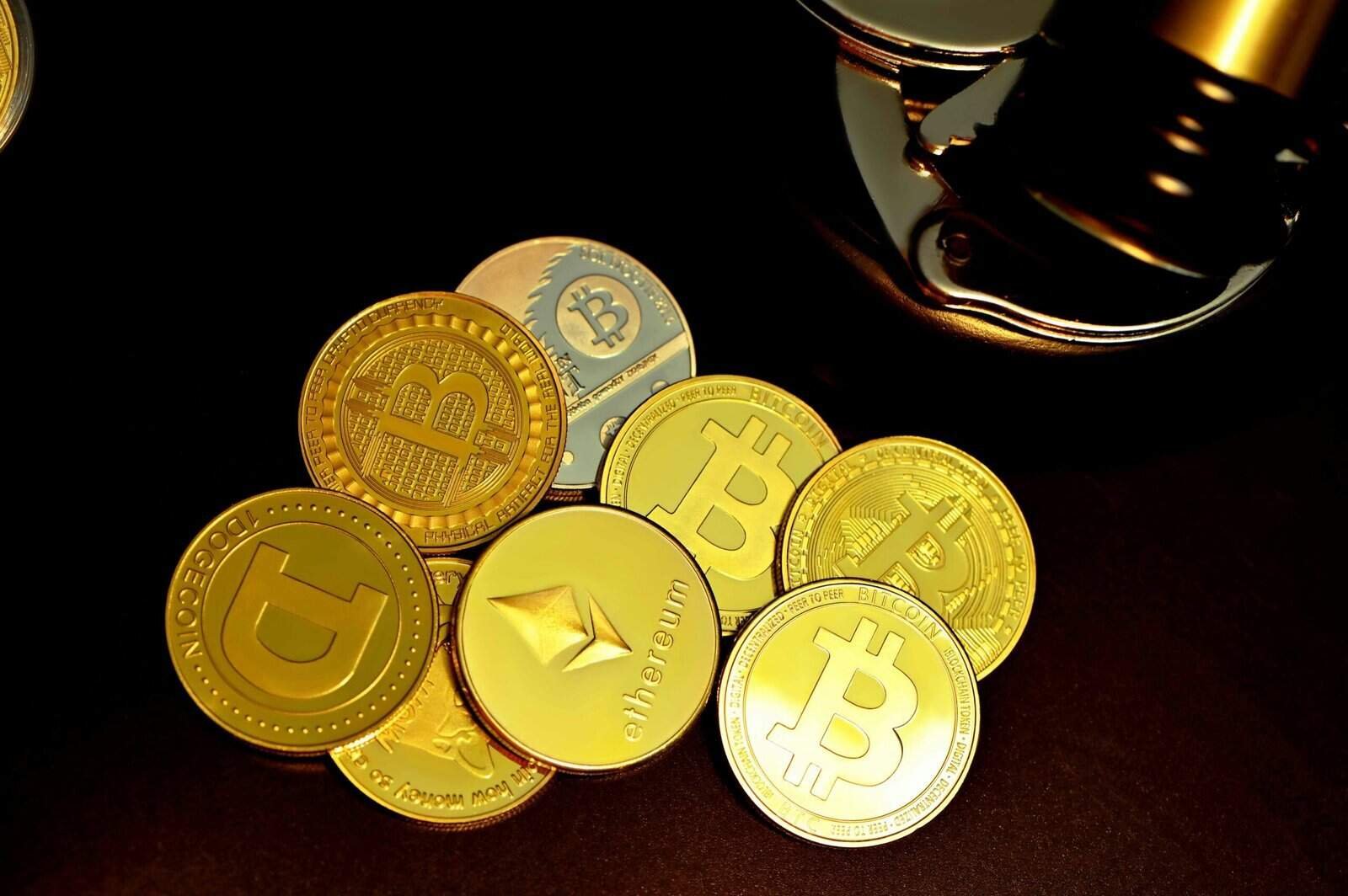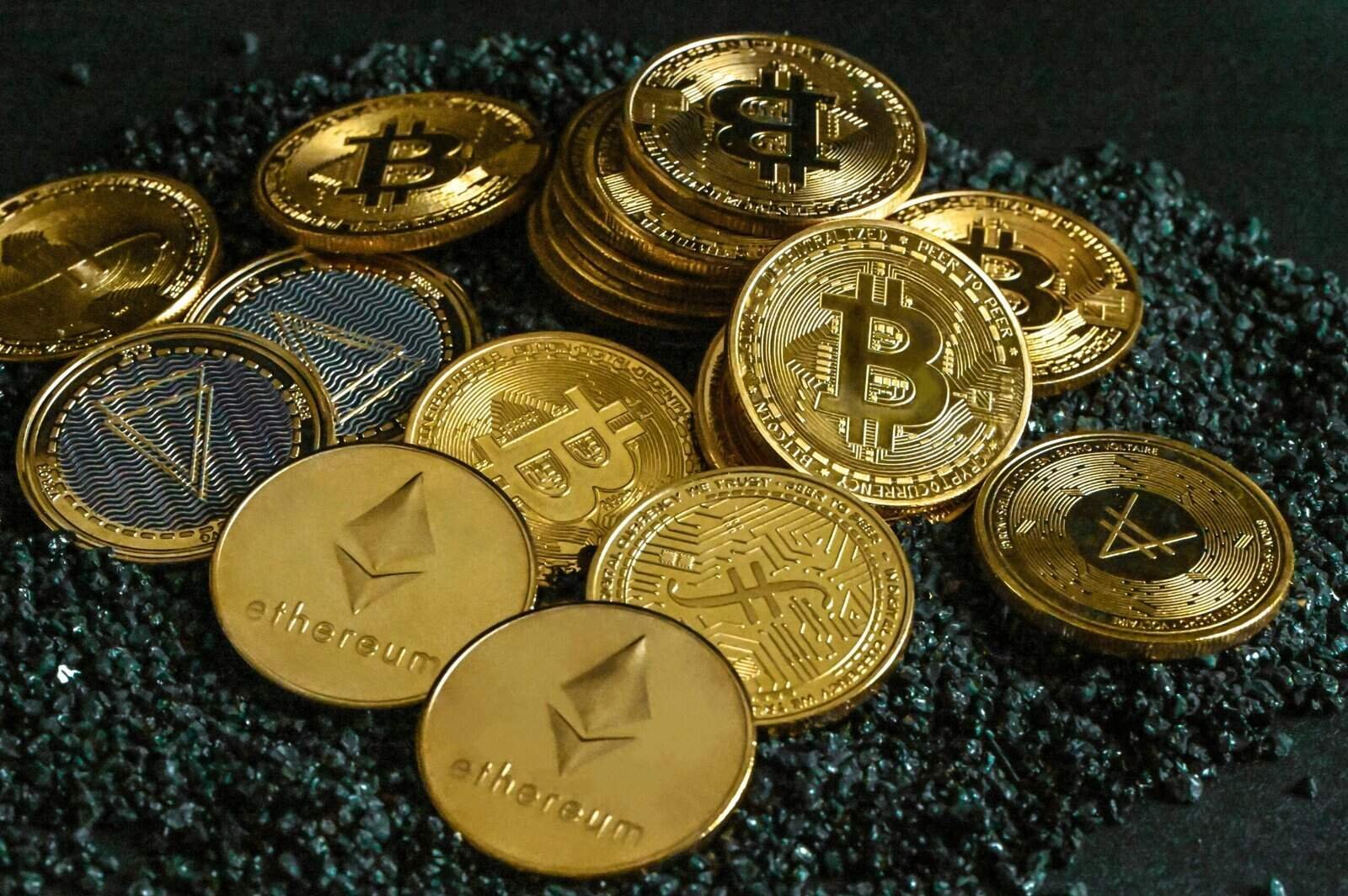? Want to know which crypto exchanges charge the least so you can keep more of your profits?
Which Crypto Exchanges Have The Lowest Fees This Year?
You’ll find that “lowest fees” depends on what you trade, how often you trade, whether you deposit or withdraw fiat, the blockchain you use, and whether you qualify for volume discounts or token-holding rebates. This guide breaks down common fee types, compares major centralized and decentralized platforms, and gives practical tips so you can identify the cheapest exchange for your needs.
Why fees matter and how they impact your returns
Fees can erode your gains, increase break-even points, and change the economics of short-term strategies like day trading or arbitrage. You’ll pay different fees at different stages: when depositing or withdrawing assets, when executing trades, and when using advanced products like margin and futures. Understanding the fee structure will help you choose the right platform and reduce costs.

The different types of fees you’ll encounter
You should get familiar with the main fee categories so you can compare exchanges properly. Each fee type affects your total cost in a different way.
Trading fees (maker and taker)
Trading fees are charged when you execute market or limit orders. Maker fees apply when you add liquidity (limit orders placed on the book), while taker fees apply when you remove liquidity (market orders or immediate fills). Maker fees are usually lower than taker fees and sometimes negative if the exchange offers rebates.
Deposit and withdrawal fees
Deposits may be free or incur bank or intermediary costs. Crypto withdrawals often require network fees (paid to miners or validators), which exchanges sometimes pass on plus a small service fee. Fiat withdrawals to bank accounts may have fixed or percentage fees.
Network (on-chain) fees vs exchange fees
Network fees are set by the blockchain and vary with congestion. Exchanges may cover network fees for deposits but will usually charge withdrawals. You’ll want to distinguish between what the blockchain charges and what the exchange adds on top.
Spread and slippage
Spread is the difference between the buy and sell price on the order book; slippage occurs when large orders move the price. Even if explicit fees are low, wide spreads can increase your effective cost.
Funding, margin, and futures fees
If you use margin or perpetual futures, you’ll see interest or funding rates and trading fees that can differ sharply from spot fees. Funding rates are periodic payments between long and short positions and change with market conditions.
Other charges (inactivity, conversion, card fees)
Some platforms charge inactivity fees, instant-buy card fees, or currency conversion fees. They may also charge for OTC services or advanced order types.
How exchanges structure discounts and fee tiers
Exchanges commonly lower fees as your monthly trading volume increases or if you hold and use a native token. You should check the tier table for each exchange, because a high-volume trader or token holder can dramatically reduce costs.
Volume-based tiers
You’ll typically see tiers where maker and taker fees drop as 30-day trading volume increases. For high-frequency or institutional traders, professional tiers can cut fees to a fraction of retail rates.
Token-based discounts and VIP programs
Native tokens (for example, BNB on Binance or KCS on KuCoin) often get you fee discounts if you hold or use them to pay fees. Exchanges may also offer a VIP program that reduces fees in exchange for volume or account balances.

How to compare fees properly
It’s easy to be misled by one-off headline numbers. Compare exchanges by looking at overall cost per trade using realistic scenarios: small retail trades, larger orders that might face slippage, frequent day trading, or occasional long-term investing.
Example comparison approach
- Pick a trade size and pair you commonly use (e.g., $1,000 ETH/BTC).
- Include maker/taker fees, the expected spread, and potential slippage.
- Add deposit/withdrawal costs for fiat or crypto transfers you often perform.
- Factor in funding/borrowing costs if you use margin or futures.
Major centralized exchanges often cited as low-fee options
Below are some centralized platforms known for competitive fees. Remember that fee schedules change, regulatory environments evolve, and you should verify the latest numbers before acting.
Binance
Binance is commonly cited for low taker and maker fees, extensive tier discounts, and a native token (BNB) that reduces fees if you choose to pay with it. You’ll often see maker fees that can be very low and taker fees competitive for retail traders, with deeper discounts for high volume.
- Typical strengths: Low base fees, deep liquidity, broad asset selection, token fee discounts.
- Typical caveats: Regulatory limitations in some countries; you should verify local availability and KYC rules.
Kraken
Kraken has historically offered competitive fees for spot trading and strong reputation for security and fiat on-ramps. Its fee tiers are straightforward and it tends to have clear withdrawal fee structures.
- Typical strengths: Strong fiat support, security reputation, clear fee tables.
- Typical caveats: Fee structure may not be the absolute lowest for ultra-high-volume traders.
Coinbase Advanced (formerly Coinbase Pro)
Coinbase Advanced often provides lower fees than Coinbase’s retail interface. It has maker/taker fees that can be attractive for U.S. users who prioritize compliance and fiat rails.
- Typical strengths: Strong regulatory compliance, easy fiat integration.
- Typical caveats: Fees higher than the very cheapest exchanges for small retail trades unless you qualify for volume tiers.
Bybit
Bybit is known for low fees in derivatives and competitive spot fees, plus frequent promotions and VIP programs. If you trade perpetual futures, its fee structure can be particularly competitive.
- Typical strengths: Low derivatives fees, aggressive promotions, liquidity.
- Typical caveats: Availability and regulatory status vary by jurisdiction.
OKX (OKEx)
OKX often competes on low fees, broad derivatives offering, and tiered discounts for token holders. It’s commonly used by active traders.
- Typical strengths: Low fees for high-volume traders, wide product set.
- Typical caveats: Verify KYC and availability for your country.
KuCoin
KuCoin has attractive spot fees and a native token discount (KCS). It also lists many altcoins that other exchanges don’t carry.
- Typical strengths: Low base fees, token discounts, broad coin listings.
- Typical caveats: Withdrawal fee structures vary; some users prefer more regulated exchanges for fiat.
Bitstamp
Bitstamp is known for transparent fee schedules and straightforward fiat support. It may not be the cheapest for spot trading compared with Binance, but it’s competitive and trustworthy.
- Typical strengths: Transparency, European fiat integration.
- Typical caveats: Fewer discount mechanisms than some competitors.

Decentralized exchanges (DEXs) and low-fee blockchains
If you trade on-chain, your effective fees include blockchain gas costs. You’ll find low trading fees on DEXs that operate on Layer-2 chains or alternative blockchains with lower gas.
Uniswap, SushiSwap and AMM DEXs
Uniswap (on Ethereum mainnet) can be expensive during congestion because of gas fees. However, on Layer-2s (Arbitrum, Optimism) or alternative chains (Polygon, BSC), AMMs can be much cheaper and competitive with centralized exchanges for certain pairs.
- Typical strengths: Non-custodial, access to new tokens, low fees on L2s and alternative chains.
- Typical caveats: Gas fees can dominate on Ethereum mainnet; slippage can be high for low-liquidity tokens.
DEX aggregators
Aggregators like 1inch, Matcha, and Paraswap route orders across liquidity pools to find the best price, reducing slippage and total cost if you trade illiquid pairs.
- Typical strengths: Better execution and lower slippage on fragmented liquidity.
- Typical caveats: Aggregators charge a small service fee and gas remains a factor.
Fee comparison table (illustrative)
This table gives you a comparative snapshot of typical fee characteristics across popular exchanges. These numbers are illustrative ranges and may have changed; always confirm the exchange’s current fee page before acting.
| Exchange | Typical spot maker/taker range* | Fiat deposit/withdrawal | Withdrawal (crypto) | Notes |
|---|---|---|---|---|
| Binance | 0.02%–0.1% / 0.04%–0.1% | Low fees, varied by method | Network fee + small service fee | BNB discounts, VIP tiers |
| Kraken | 0.00%–0.16% / 0.10%–0.26% | Bank transfers supported, small fees | Network fee charged per token | Strong fiat rails |
| Coinbase Advanced | 0.00%–0.5% / 0.04%–0.5% | ACH free (US), card fees high | Network fee + service fee | Regulatory-focused |
| Bybit | 0.02%–0.1% / 0.03%–0.1% | Low-fee transfers for some rails | Network fee + small fee | Derivatives-focused |
| OKX | 0.02%–0.1% / 0.03%–0.1% | Multiple fiat on-ramps | Network fee + service fee | Token/VIP discounts |
| KuCoin | 0.02%–0.1% / 0.05%–0.1% | Varied; fiat port partners | Network fee + service fee | KCS discounts |
| Bitstamp | 0.00%–0.50% / 0.10%–0.50% | Good EU/UK fiat support | Network fee + flat fee in some cases | Transparent fees |
*Ranges reflect typical maker/taker tiers for retail to intermediate volumes and may not represent promotional or VIP pricing.

How network choice influences fees (you must consider blockchains)
Where you move crypto matters. You’ll often save more by switching to a cheaper network than by switching exchanges.
Ethereum mainnet vs Layer-2s and alternative chains
- Ethereum mainnet: High gas during congestion—can make small trades uneconomical.
- Layer-2s (Arbitrum, Optimism): Much lower gas; some exchanges and bridges support direct deposits/withdrawals.
- Alternative chains (Polygon, BSC, Solana): Lower fees but different liquidity and counterparty risks.
You should weigh security, liquidity, and bridging costs when choosing a network.
Typical real-world scenarios and which platform might be cheapest
Here are practical scenarios to help you relate fee types to your use cases.
You do occasional buy-and-hold investing with fiat
If you buy crypto infrequently with fiat and hold long-term, your biggest concerns will be fiat deposit/withdrawal fees and the spread. Use an exchange with low or free bank transfers and transparent spreads—many regulated exchanges (Coinbase Advanced, Kraken, Bitstamp) may be convenient even if trading fees aren’t the absolute lowest.
You trade actively or day-trade
Active traders focus on maker/taker fees and liquidity. Binance, Bybit, OKX, and KuCoin tend to offer competitive spot and derivatives fees plus VIP tiers. You should also check rebates for market-making strategies.
You arbitrage across exchanges
Speed, liquidity, and low trading fees matter most. Binance and major derivatives platforms often offer the liquidity and pricing you need. But remember withdrawal network times and on-chain fees can kill an arbitrage opportunity.
You want the cheapest way to move crypto on-chain
Using Layer-2s or low-fee chains usually wins. For example, swapping on a DEX on Polygon or using bridges that minimize gas usage might be cheaper than centralized withdrawal fees.

Hidden fees and pitfalls you must watch for
Some costs are easy to overlook but can add up quickly.
Spread masking as “no fee” trading
Platforms that advertise zero trading fees may make money through wider spreads. You should check the order book depth to see the true cost.
Fiat rails and conversion fees
Even if the exchange advertises free deposits, your bank or third-party payment processor may charge conversion or transfer fees. Card purchases often carry sizeable fees.
Withdrawal minimums and fixed fees
Fixed withdrawal fees are more significant for small withdrawals. If you frequently move small amounts, flat fees can be a hidden cost.
Temporary or promotional pricing
Promotions can be attractive, but read the fine print—some discounts expire or are conditional on meeting requirements.
Strategies to reduce trading costs
You can take concrete steps to lower your fees across exchanges.
Use maker orders when possible
Place limit orders that add liquidity to the order book to earn maker pricing or rebates. For frequent traders, this can reduce costs substantially.
Accumulate volume or use token discounts
If you plan to trade a lot, compare volume tiers and consider whether paying fees with a native token (if safe and you’re comfortable holding it) makes sense.
Use bank transfers instead of cards for fiat
Bank transfers typically have lower or no fees compared to credit/debit card purchases.
Consolidate assets to reduce withdrawals
Batch withdrawals or use larger but less frequent withdrawals to reduce the impact of fixed fees.
Consider DEXs on Layer-2s for small swaps
If you trade tokens without needing fiat rails, L2 DEXs can be far cheaper for low-value trades.
When low fees aren’t the only consideration
Cheapest isn’t always best. Consider these factors alongside fees.
Security and custody
Exchanges with low fees but lax security expose your funds to higher risk. You should prioritize platforms with strong security practices and insurance mechanisms when custody matters.
Regulatory compliance and availability
Some cheap exchanges may restrict services in your country or be subject to regulatory action. Choose a platform you can use legally and confidently.
Liquidity and market depth
Good pricing depends on liquidity. Cheaper fee platforms with shallow order books might give you worse effective execution.
Customer support and dispute resolution
If you need fiat withdrawals or face account issues, reliable support can be more valuable than saving a few basis points on fees.
Special cases: futures, margin, and OTC desks
If you trade leveraged products or need large blocks, fee structures change.
Futures and perpetuals
Perpetual futures often have lower maker fees and slightly higher taker fees than spot markets, plus funding rates that can be positive or negative. Exchanges like Bybit, OKX, and Binance are popular for derivatives.
Margin trading
Margin interest rates or borrowing costs add to trading costs. Look for transparent margin rates and a robust liquidation policy.
OTC services
If you move very large amounts, OTC desks give you custom pricing, sometimes lower market impact, and negotiated fees. OTC trades generally require KYC and minimum sizes.
Practical checklist: how to pick the cheapest exchange for your needs
Use this checklist when comparing platforms so you don’t miss key cost drivers.
- Which assets and trading pairs do you need (common vs niche)?
- What payment methods will you use for fiat deposits/withdrawals?
- Are maker or taker fees more important for your strategy?
- Do you need margin, futures, or staking?
- Are you willing to hold a native exchange token for discounts?
- What networks will you use for withdrawals and do you prefer L2 options?
- Does the exchange operate legally in your country and offer reliable support?
Quick decision rules
- If you trade frequently and care about low spot fees: prioritize exchanges with low maker/taker fees and volume tiers (Binance, Bybit, OKX, KuCoin).
- If you want simple fiat on-ramps and regulatory comfort: consider Coinbase Advanced, Kraken, Bitstamp.
- If you want to avoid custody and pay very low transaction fees for small trades: use DEXs on Layer-2s or low-fee chains.
- If you trade derivatives: check derivatives fee schedules and funding rates; Bybit and OKX are commonly competitive.
Example: calculating the real cost of a $1,000 trade
To make this concrete, suppose you buy $1,000 of BTC and later sell it. Consider:
- Trading fee: 0.10% taker = $1 per trade, $2 round trip.
- Deposit fee: bank transfer free.
- Withdrawal: 0.0005 BTC (network fee) = depends on BTC price—assume $10 = $10.
- Spread/slippage: 0.05% each way = $0.50 + $0.50 = $1 round trip.
Total round-trip cost = $2 (fees) + $10 (withdrawal) + $1 (spread) = $13 or 1.3% of your trade. If you used a different exchange with lower trading fees but a higher withdrawal flat fee, the outcome could differ. That’s why you must total all components.
Final recommendations and best practice
- Compare total cost, not only headline trading fees. Include deposits, withdrawals, and expected slippage.
- Use limit (maker) orders where practical to reduce fees.
- Prefer bank transfers for fiat when available, and avoid card purchases unless necessary.
- Consider DEXs or Layer-2 solutions for small, frequent swaps to minimize gas costs.
- Keep an eye on your exchange’s fee page and announcements—fee structures change.
- Maintain proper security hygiene: even low fees aren’t worth risking custody on an untrusted platform.
Frequently asked questions (short answers)
Are decentralized exchanges cheaper than centralized ones?
They can be cheaper for small swaps on low-fee networks, but on Ethereum mainnet gas can make them expensive. Check Layer-2 DEXs for lower costs.
Does holding the exchange’s token always reduce fees?
Often yes, but you should weigh token volatility and custody risk against fee savings.
How do I avoid high network fees for withdrawals?
Use exchanges that support Layer-2 withdrawals, choose cheaper networks, or batch withdrawals.
Should you pick the exchange with the lowest fees?
Not always. Balance fees with security, liquidity, regulatory compliance, and customer support.
Closing thoughts
You’ll find the lowest fees by aligning the exchange’s strengths with your trading behavior. For active traders, tiered fee discounts and token rebates matter. For buy-and-hold investors, fiat rails and withdrawal costs are more important. If you prefer non-custodial trading, Layer-2 DEXs may be the cheapest option. Always calculate total expected costs for your typical trades, verify current fee schedules, and prioritize security.
If you want, tell me the type of trading you do (occasional buys, day trading, futures, or on-chain swaps) and the assets or networks you use, and I’ll give tailored suggestions on the cheapest exchanges and fee-saving tactics for your specific situation.
